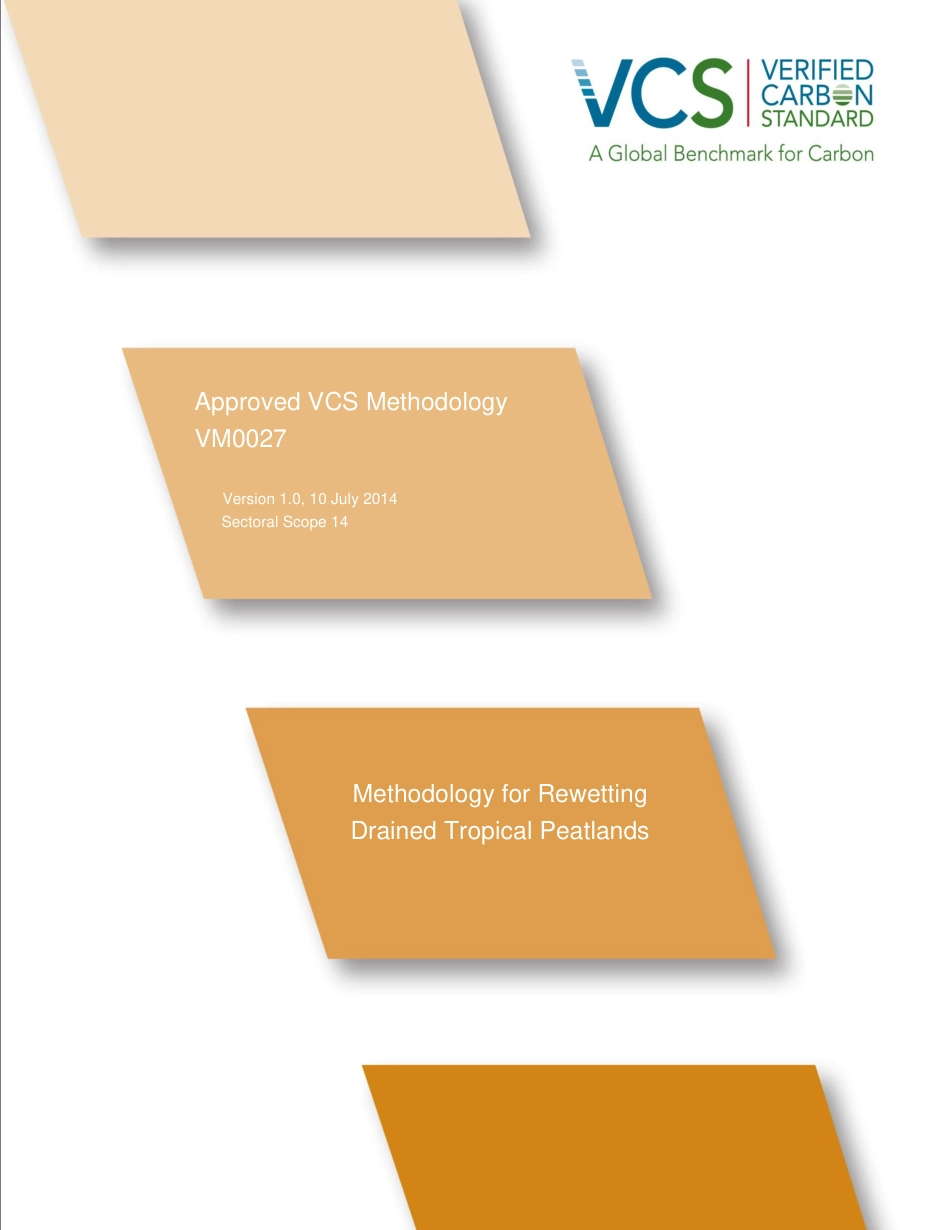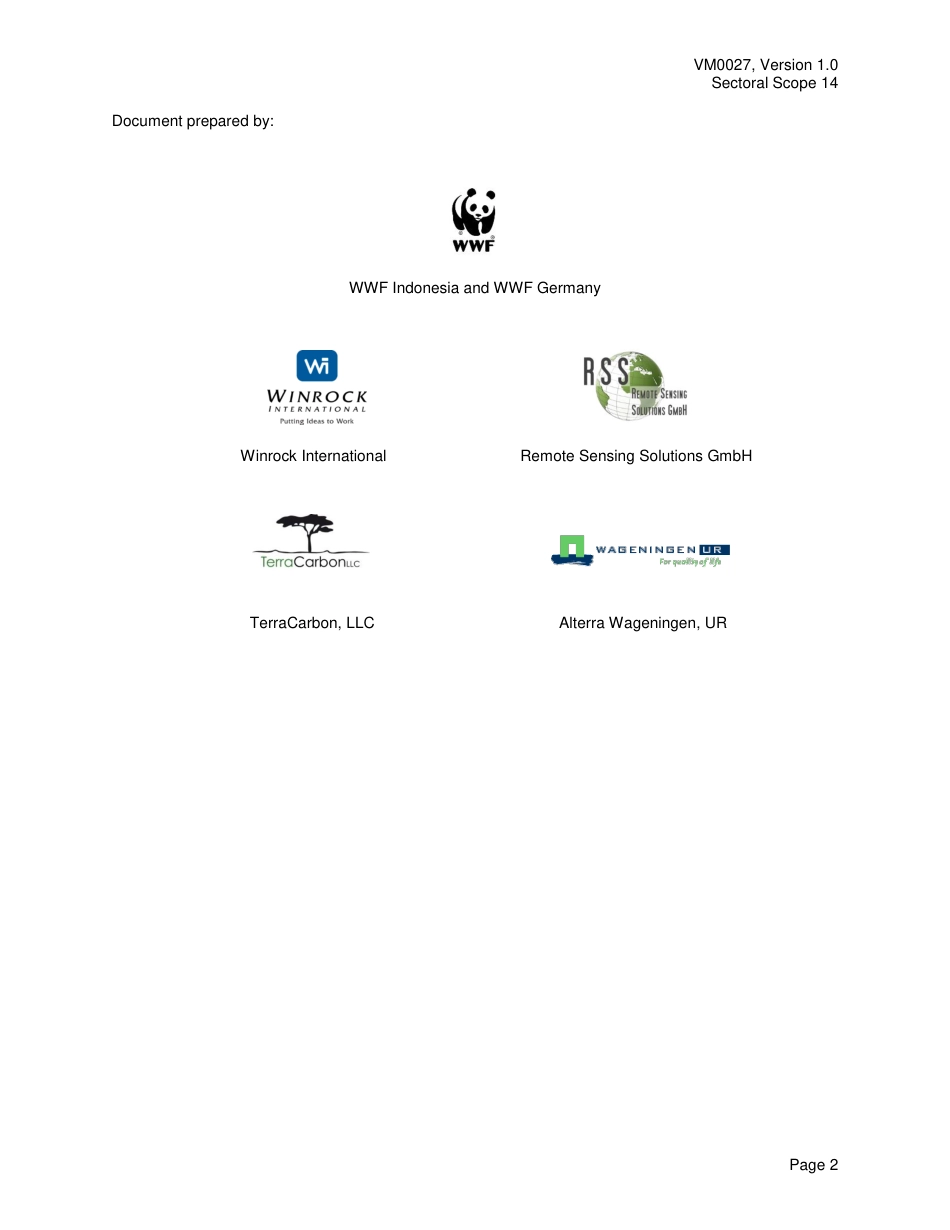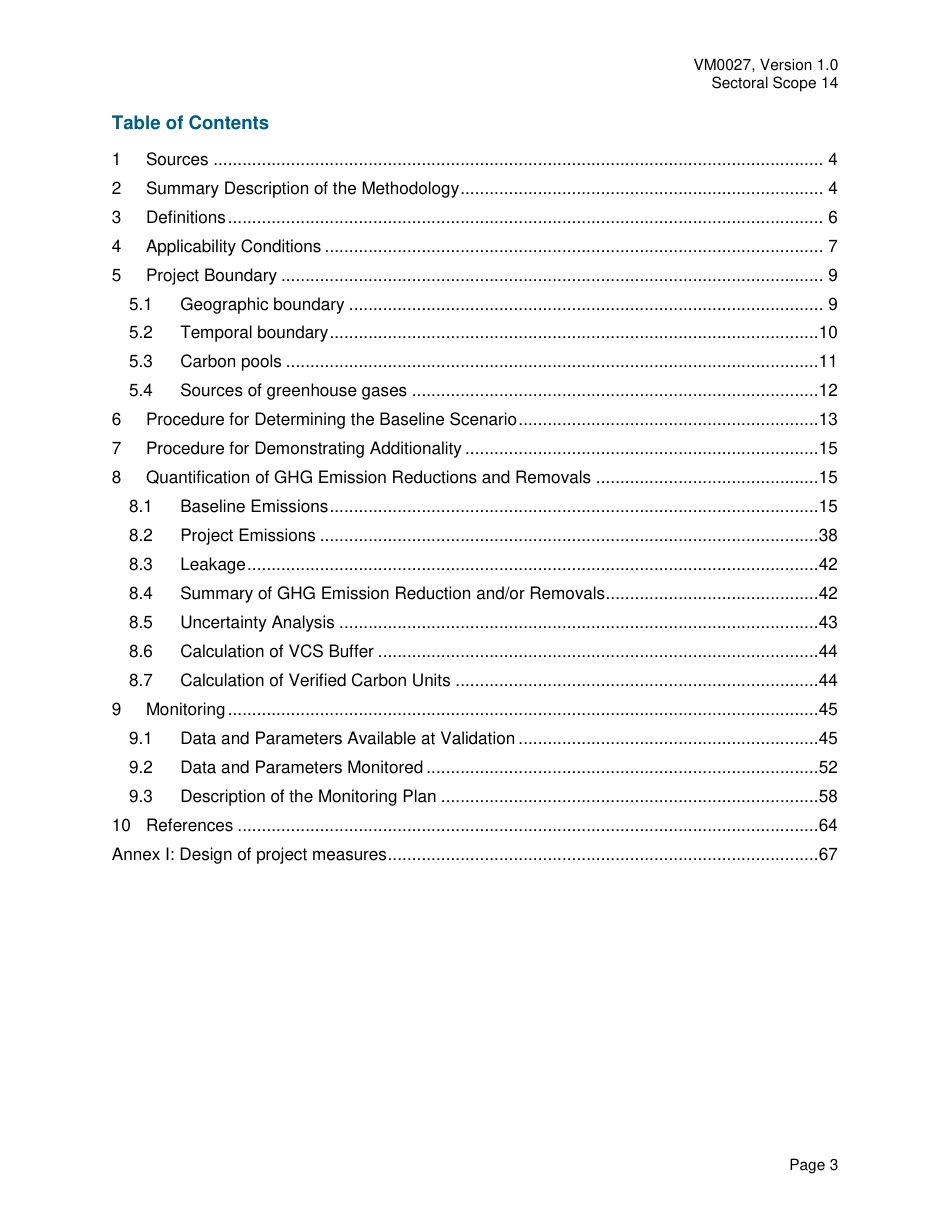VM0027, Version 1.0 Sectoral Scope 14 Page 1 Approved VCS Methodology VM0027 Version 1.0, 10 July 2014 Sectoral Scope 14 Methodology for Rewetting Drained Tropical Peatlands VM0027, Version 1.0 Sectoral Scope 14 Page 2 Document prepared by: WWF Indonesia and WWF Germany Winrock International Remote Sensing Solutions GmbH TerraCarbon, LLC Alterra Wageningen, UR VM0027, Version 1.0 Sectoral Scope 14 Page 3 Table of Contents 1 Sources .............................................................................................................................. 4 2 Summary Description of the Methodology ........................................................................... 4 3 Definitions ........................................................................................................................... 6 4 Applicability Conditions ....................................................................................................... 7 5 Project Boundary ................................................................................................................ 9 5.1 Geographic boundary .................................................................................................. 9 5.2 Temporal boundary .....................................................................................................10 5.3 Carbon pools ..............................................................................................................11 5.4 Sources of greenhouse gases ....................................................................................12 6 Procedure for Determining the Baseline Scenario ..............................................................13 7 Procedure for Demonstrating Additionality .........................................................................15 8 Quantification of GHG Emission Reductions...



